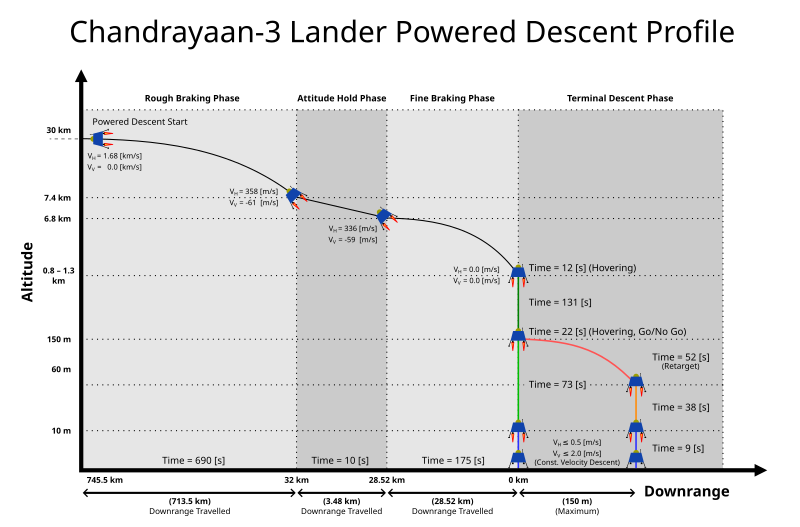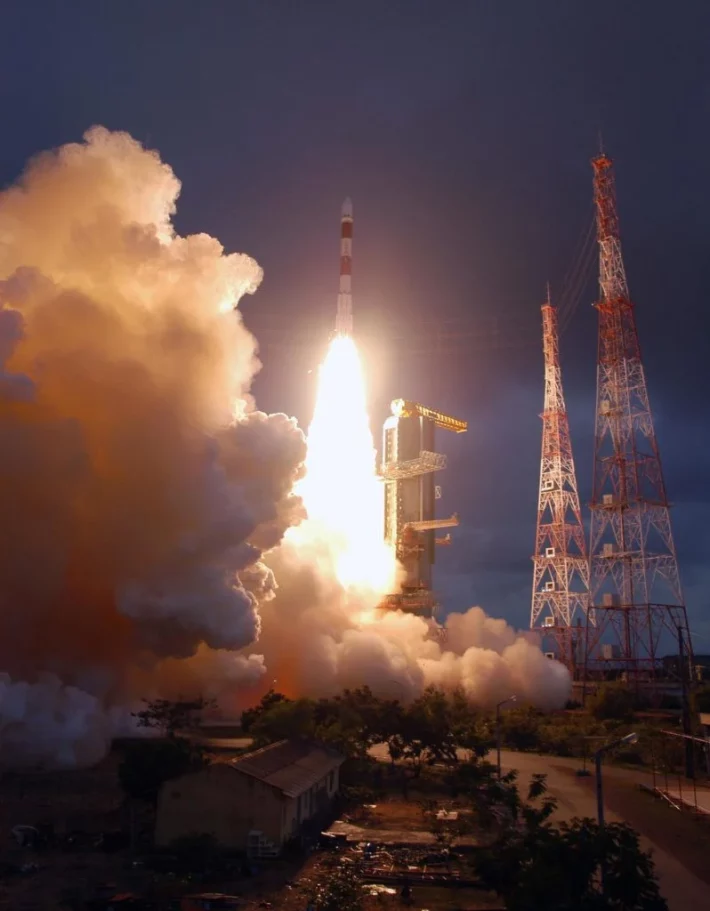On August 23, 2023, India made history when they had the first lunar lander land on the South Pole of the moon.
Here’s how they did it…
On the July 14, lunar lander Chandrayaan-3–part of India’s moon exploration series–lifted off from Sriharikota Range, India.
Launched on a domestically built LVM3, a rocket costing 60 million USD per launch, the Chandrayaan 3 lunar lander took to the skies at 9:05 UTC.
When in orbit around the Earth, the lunar lander was approximately at its closest at 106 miles above the Earth’s surface, and around 22,680 miles at its farthest point. The lander then reached its orbit around the moon, also known as the trans-lunar injection. On August 17, the moon lander started its path.
During its six day journey, The Chandrayaan-3 lander started its braking maneuver, to eventually lock its orbit around the moon. The lunar lander was about 4.5 miles above the lunar surface when in orbit.
The Chandrayaan-3 lander used its engines to slowly descend onto the lunar surface, touched down at approximately 12:33 UTC … and history was made.

The Chandrayaan-3 lunar lander’s mission was solely to provide more information on this never explored portion on the moon. India was the first country to touch down on the South Pole of the moon, and the 4th country to reach the moon. According to the ISRO, The Indian engineers wanted to experiment on the surface, to better understand what our orbiting moon was made of.
Soon after the historic touchdown of the module, Chandrayaan-3 needed to shut down in order to lengthen the duration of this mission. It was also to conserve battery during the Lunar nights.
Unfortunately, The Chandrayaan-3 was unable to wake up, and multiple efforts to regain energy and get back power did not work. As of right now, it has been around a month since we last had contact with the lander and nothing seems to be working. Could this be the last we see of the Chandrayaan-3?
Although the Lunar Lander is unable to be recalled as of right now, landing on this part of the moon still benefits us in terms of research. As the first country to land on this never explored part, new resources such as water and oxygen can be found in future missions, which can be used to expand space colonization.
Seeing as India completed such a difficult task, collaboration and partnerships with other countries are on the horizon, and this accomplishment by the Indian nation only benefits the world in research and exploration of space.

